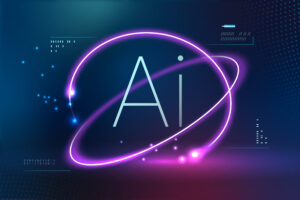What is AI?
Artificial intelligence (AI) is the ability of machines or computer systems to perform tasks that normally require human intelligence. These functions may include reasoning, learning, problem solving, understanding language, and perception. In essence, AI allows machines to think, learn and act intelligently like humans, but usually in specific fields or areas.
AI encompasses a wide range of technologies and approaches, and it can be broken down into several key areas. Here I have discussed some of them:

Key Areas Of AI
1.Machine Learning:
- A branch of AI where computers learn from data without need of direct programmed.
- Supervised learning: The model learns from labeled data (for example, images labeled “cat” or “dog”).
- Unsupervised learning: The model find out hidden patterns in the data without labels.
- Reinforcement learning: The machine learns through trial and error, receiving rewards for correct actions and penalties for errors.
2.Natural Language Processing:
3.Computer Vision:
- AI enables machines to interpret and analyze visual information from the environment, such as images or videos.
- Applications include facial recognition like the face lock on phones and on some apps, object detection, and self-driving cars.
4.Robotics:
- AI-powered machines (robots) that can perform tasks autonomously. These systems often combine machine learning, sensors and other AI technologies.
- Robots are used in manufacturing, medicine (eg, surgery), and even exploration (eg, Mars rovers).

5.Expert Systems:
- AI Systems that replicate the decision-making skills of a human expert in specific areas, such as diagnosing diseases or solving complex issues.
6.Deep Learning:
- A subfield of machine learning that uses neural networks with many layers (hence “depth”) to model complex patterns in data. Deep learning has been particularly successful in areas such as image recognition and natural language understanding.
How AI Works:
Basically, AI systems process large amounts of data, identify patterns, and make decisions or predictions based on that data. In machine learning, this involves “training” a model with examples so that the system can generalize to new, unseen data. For example, in face recognition, AI can be trained on a dataset of labeled face images, learning to identify distinguishing features (such as the shape of the eyes, nose, etc.). Once trained, it can then recognize faces in new images, even if it hasn’t seen those exact faces before.

Types of AI
Artificial intelligence (AI) can be classified in different ways depending on its capabilities, functionality and underlying technology. Here are the main types of AI:
1.Based on Capability:
a) Narrow AI(Weak AI)
Definition: AI developed and trained for a particular task or a limited set of tasks. It operates within a limited scope and lacks general reasoning capabilities.
Examples:

b) General AI(Strong AI)
Definition: A type of AI that can perceive, learn, and apply knowledge to a wide range of tasks similar to human intelligence. It can reason, plan, solve problems, and think abstractly in various domains.
Examples: Currently theoretical, as we don’t have real general AI systems yet.
c) Superintelligent AI
Definition: A form of AI that surpasses human intelligence in all aspects, including creativity, problem solving, and social intelligence. This is an advanced concept that has yet to catch on.
Examples: Speculative, often discussed in a future or theoretical context.
2. Based on Functionality:
a) Reactive Machines
Definition: AI systems that react to specific stimuli with pre-programmed actions, do not retain memories or past experiences for future use.
Examples:
- IBM’s Deep Blue, a chess-playing AI
- Simple robots or automation systems
b) Limited Memory
Definition: AI that can learn from historical data and make decisions based on past experiences. These systems have short-term memory to influence future decisions.
Examples:
- Self-driving cars (utilize sensors and data from past history driving data to make the decisions)
- AI in predictive analytics
c) Theory of Mind
Definition: A more advanced AI that can understand human emotions, beliefs, intentions and thoughts. This type of AI can interact socially and understand the context of human behavior.
Examples: Not yet achieved, but the goal is to create AI that can mimic human-like empathy and understanding.

d) Self-aware AI
Definition: The highest level of AI, which not only understands the world and other minds, but also has its own consciousness, self-awareness, and subjective experiences.
Examples: Still theoretical, and the subject of much debate in AI ethics and philosophy.
3. Based on Technology:
a) Machine Learning
Definition: A branch of AI that allows systems to learn from data and improve performance without direct programming.
Types of ML:
- Supervised learning: AI learns from labeled data (such as classification tasks).
- Unsupervised learning: AI recognizes patterns and structures in unlabelled data (eg, in clustering tasks).
- Reinforcement learning: AI learns by interacting with the environment and getting feedback (e.g, gameplay AI).

b) Deep Learning
Definition: A subset of machine learning that uses neural networks with many layers (hence “deep”) to analyze data. Deep learning is particularly good for complex tasks such as image and speech recognition.
Examples:
- Self-driving cars (image and sensor data processing)
- Virtual Assistants (Natural Language Processing)
c) Natural Language Processing (NLP)
Definition: AI techniques that enable machines to understand, interpret, and generate human language in a way that is meaningful and contextually appropriate.
Examples:
- Chatbots (like ChatGPT)
- Language translation systems (such as Google Translate)
- Text summarization systems
d) Computer Vision
Definition: An area of AI that enables machines to interpret and make decisions based on visual data, such as images or videos.
Examples:
- Face recognition
- Object detection
- Medical imaging
e) Expert Systems
Definition: AI is designed to mimic the decision-making abilities of a human expert in a particular field. These systems use a knowledge base and inference rules to solve problems.
Examples:
- Medical diagnostic system
- Financial Advisory System
f) Robotics
Definition: AI is applied to robots so that they can perform tasks autonomously or semi-autonomously.
Examples:
- Industrial robots (eg, assembly line automation)
- Service robots (eg, robot vacuums)
- A humanoid robot

4.Based on Applications:
a) AI in Health
AI systems designed to improve medical care, from diagnosis and treatment planning to drug discovery and personalized medicine.
Examples:
- IBM Watson for Oncology
- AI-powered imaging tools to detect diseases like cancer
b) AI in Finance
AI systems that analyze market data, detect fraud, optimize investments, and automate financial tasks.
Examples:
- Algorithmic trading system
- Fraud detection systems
- Robo-advisor for wealth management
c) AI in Education
AI applications aim to enhance learning experiences, personalize education, and automate administrative tasks.
Examples:
- Personalized tutoring systems (eg, Duolingo, Khan Academy)
- AI powered grading systems
d) AI in Entertainment
5. Based on Structure:
a) Symbolic AI(Classical AI)
Definition: A type of AI that represents knowledge using symbols and logic-based rules. It is also called as “Good Old Fashioned AI” (GOFAI).
Examples: early expert systems, logic-based problem solving systems
b) Connectionist AI(Neural AI)
Definition: AI systems that develop the brain’s neural networks and learn patterns from large datasets. This includes deep learning and other efforts relying on neural networks.
Examples: Deep knowledge networks used to recognize image and identities.
c) Hybrid AI
Definition: A combination of symbolic and connectionist AI approaches to leverage both rule-based logic and pattern recognition.
Examples: Some of the most advanced AI systems such as AlphaGo, which combine deep learning and symbolic reasoning.

These categories help categorize AI systematically, but many AI systems can fall into multiple categories at once. For example, self-driving cars use machine learning, computer vision, robotics, and may even incorporate reinforcement learning techniques.
Now you can make website with the help of AI and design it according to your own choice. For any help in making website read https://simplytrove.com/how-to-make-money-by-wordpress-website-for-free/




Выбор недорогого сервера HP Proliant, Оптимальные условия доставки серверов HP Proliant
сервера hp купить http://www.servera-hp-proliant.ru .
👏👍well explained